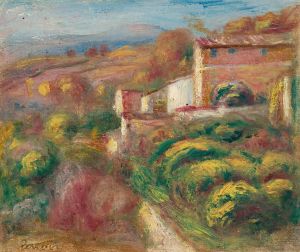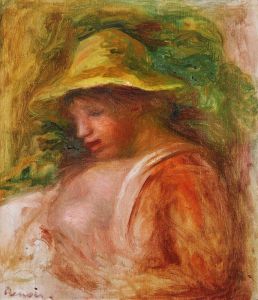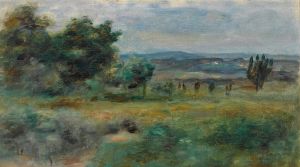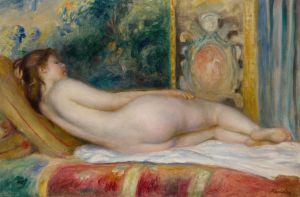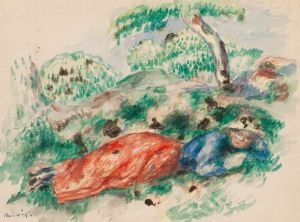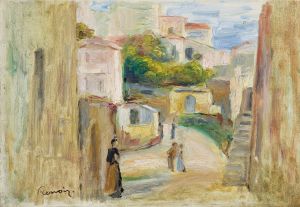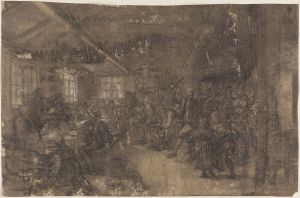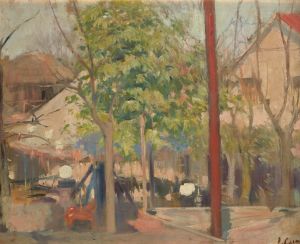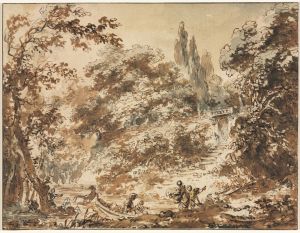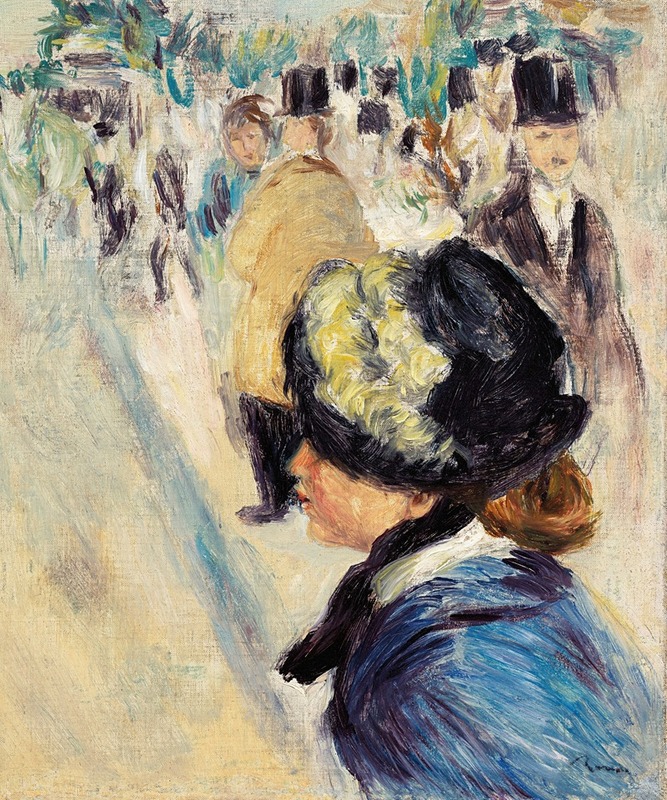
La place Pigalle
A hand-painted replica of Pierre-Auguste Renoir’s masterpiece La place Pigalle, meticulously crafted by professional artists to capture the true essence of the original. Each piece is created with museum-quality canvas and rare mineral pigments, carefully painted by experienced artists with delicate brushstrokes and rich, layered colors to perfectly recreate the texture of the original artwork. Unlike machine-printed reproductions, this hand-painted version brings the painting to life, infused with the artist’s emotions and skill in every stroke. Whether for personal collection or home decoration, it instantly elevates the artistic atmosphere of any space.
Pierre-Auguste Renoir, a leading figure in the Impressionist movement, is renowned for his vibrant light and saturated color, often focusing on people in intimate and candid compositions. One of his works, "La place Pigalle," captures the essence of a bustling Parisian scene, reflecting Renoir's fascination with urban life and his ability to portray the vibrancy of the city.
"La place Pigalle" is a painting that exemplifies Renoir's skill in capturing the lively atmosphere of Paris. Place Pigalle, located in the Montmartre district, was a popular area known for its cafés, theaters, and vibrant nightlife during the late 19th century. This setting provided Renoir with a rich tapestry of urban life to explore in his work.
Renoir's painting style is characterized by loose brushwork and a focus on the effects of light, which are evident in "La place Pigalle." The painting likely features a bustling scene with people engaged in various activities, capturing the dynamic energy of the location. Renoir's use of color and light would have been instrumental in conveying the mood and atmosphere of the scene, a hallmark of his Impressionist technique.
The painting reflects Renoir's interest in the interplay between people and their environment, a common theme in his work. His ability to depict the nuances of human interaction and the vibrancy of urban settings made his paintings resonate with viewers, offering a glimpse into the lively world of 19th-century Paris.
While specific details about the composition and elements of "La place Pigalle" are not extensively documented, Renoir's broader body of work provides context for understanding his approach to such scenes. His paintings often feature a blend of figures and landscapes, with a focus on capturing the fleeting moments of everyday life.
Renoir's contribution to the Impressionist movement was significant, as he, along with contemporaries like Claude Monet and Edgar Degas, sought to break away from traditional artistic conventions. They emphasized the importance of capturing the immediate impression of a scene, often working en plein air to better observe and depict natural light and color.
"La place Pigalle" is a testament to Renoir's ability to encapsulate the spirit of Parisian life, offering viewers a window into the vibrant culture of the time. Although specific information about the painting's current location or detailed analysis might be limited, its existence within Renoir's oeuvre highlights his enduring legacy as a master of Impressionism.
In summary, "La place Pigalle" by Pierre-Auguste Renoir is an exemplary piece that captures the lively essence of a well-known Parisian locale. Through his innovative use of color, light, and composition, Renoir brings to life the dynamic atmosphere of Place Pigalle, reflecting his broader contributions to the Impressionist movement and his enduring impact on the art world.








